

Long Island
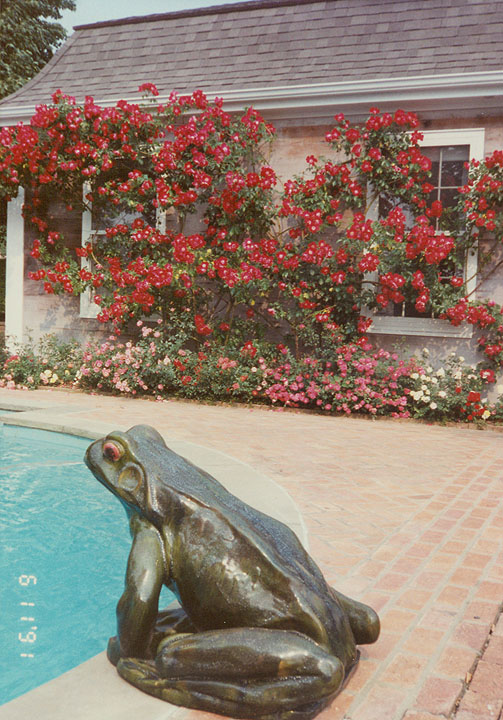
island of many fine homes and gardens
Long Island, largest island in the continental United States, located in southeastern New York. It thrusts eastward from New York Bay to a point abreast of the Connecticut-Rhode Island state line, with Long Island Sound to the north and the Atlantic Ocean to the south and east. The island's eastern end is split by Peconic Bay to form two narrow peninsulas, or forks. The northern fork is 43 km (27 mi) long and ends at Orient Point, and the southern fork is 68 km (42 mi) long, ending at Montauk Point.
![]()
Hempstead

Cathedral of the Incarnation
(built by Mrs. Stewart in 1876)
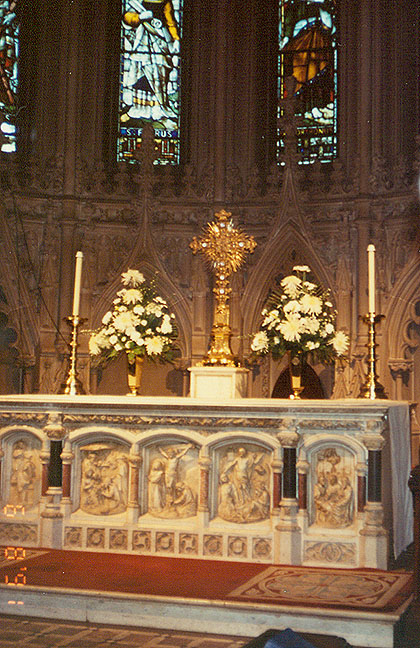
the altar
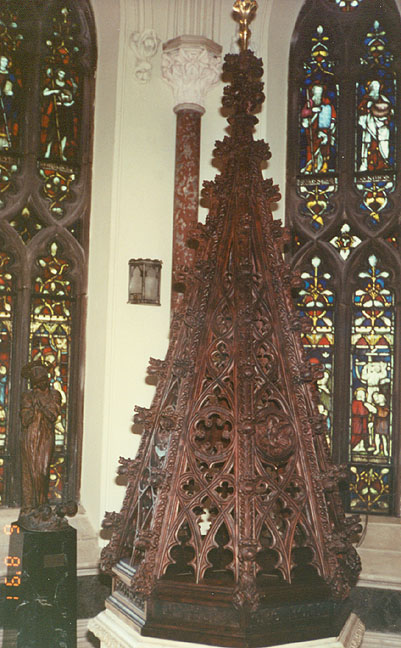
gothic baptistery

gothic cross on the altar

St Paul's private boys school
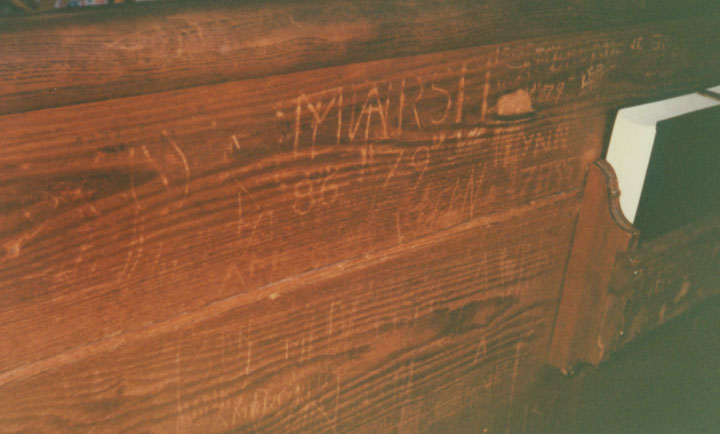
school boy chapel bench engraving
![]()
Long Island was built up by a glacier, which, as it melted and retreated, left
deposits called moraine. The island features two separate moraines, running
almost its entire length. Over most of Long Island, the two deposits are
virtually indistinguishable from each other. At the eastern tip, however, the
two moraines are separated by water into the two forks.
![]()
Manhasset

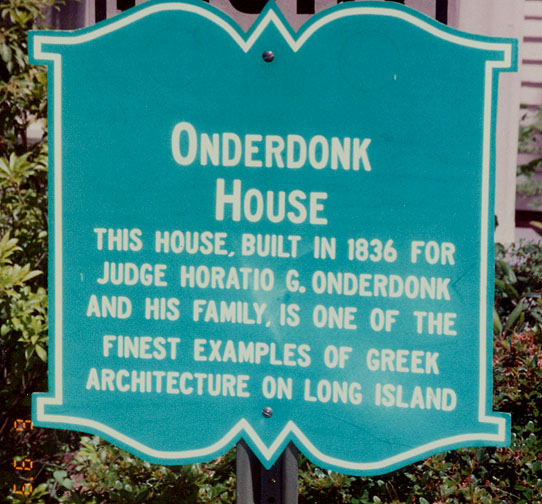
Onderdonk House
(fine example of Greek Revival architecture)
![]()
The north shore of the island is hilly and deeply indented. On the south shore
the ocean breaks on a narrow sandbar, backed by Great South Bay, Moriches Bay,
and Shinnecock Bay. These bays are connected to the ocean through occasional
breaks, or channels, in the protective sandbar. This ribbon of sand widens at
various points to form virtual islands fronting the open sea. These islands have
developed into a series of bathing beaches and summer colonies, including the
Fire Island National Seashore.
![]()
Setauket
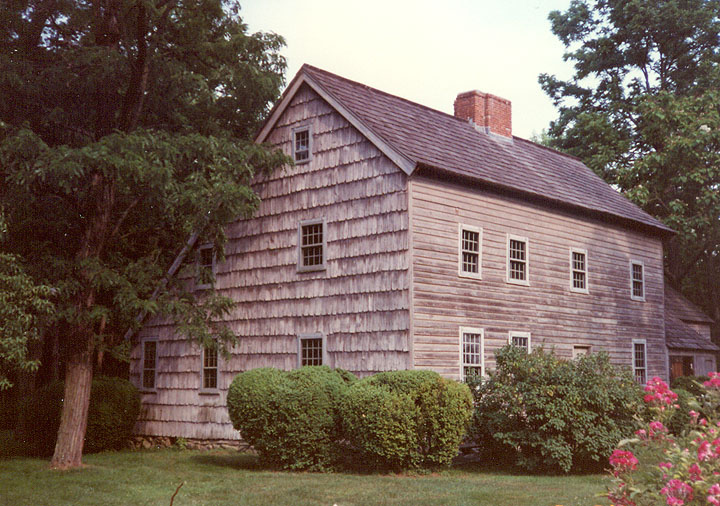
Thompson House
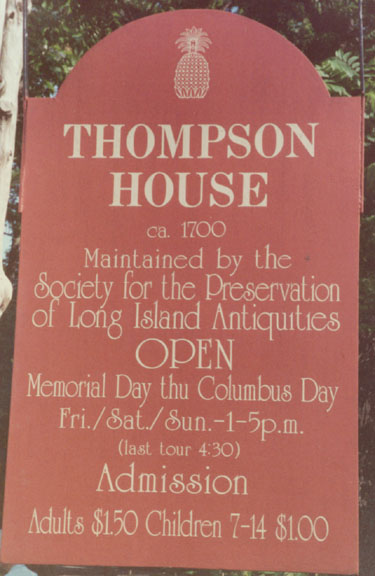
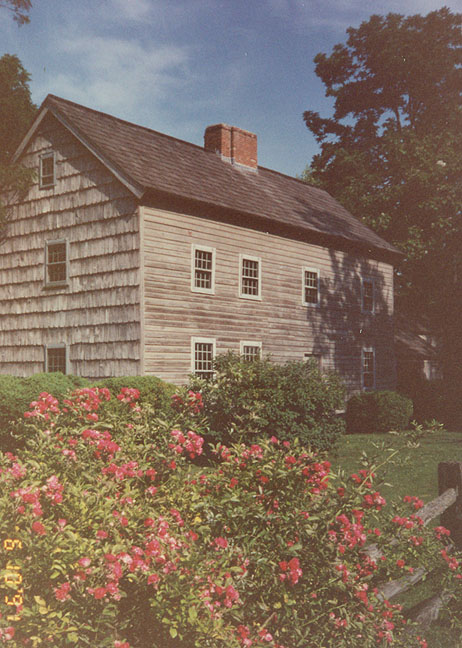
![]()
Long Island marks the southernmost and easternmost part of New York State and
comprises four counties: Kings, Queens, Nassau, and Suffolk. Kings County, which
is coextensive with Brooklyn and is on the island's southwestern end, and
Queens, at the island's western end, are also boroughs, or administrative units,
of New York City. These two counties account for more than half the island's
population. Nassau is a sprawling, thickly settled suburban area adjacent to the
great metropolis to its west. Suffolk, which comprises the eastern two-thirds of
the island and is the largest in area, has many suburban communities. It is also
the most productive agricultural county in New York State, with large farms,
known especially for growing potatoes. In addition, Long Island has a large
duck-raising industry and an important commercial fishing industry, in
particular oyster and clam fishing.
![]()
Jackson Pollock
Pollock, (Paul) Jackson (1912-1956), American
abstract painter, who developed a technique for applying paint by pouring or
dripping it onto canvases laid on the floor.
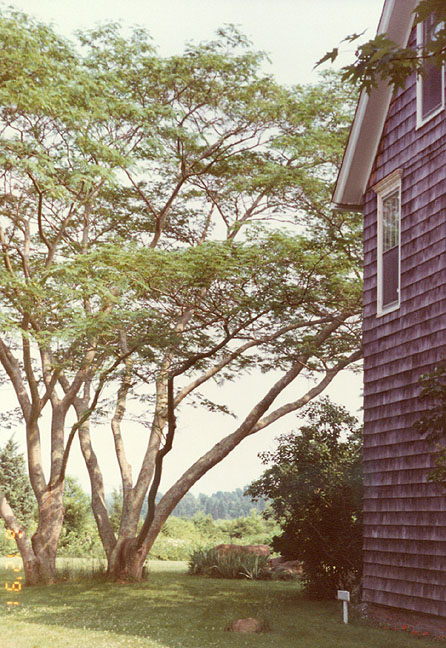
Stony Brook
(Pollock's famous "on-the-floor" painting studio is behind this house)
After moving to a larger studio on Long Island in 1947, Pollock began creating his characteristic large-scale abstractions. He placed the canvas on the floor, attacked it from all directions, and poured paint directly on it. His new method resulted in part from his interest in Native American sand paintings, which are created on the ground with sand of various colors let loose from the hand.
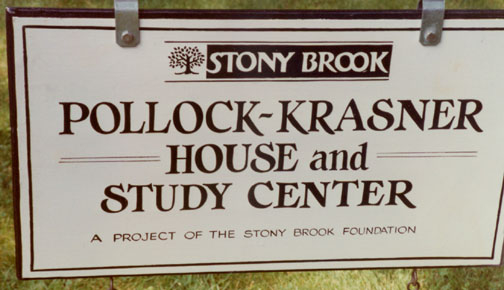
Pollock reinforced this dynamism with compositions that emphasized all parts of
the canvas equally and had no visual center of attention. He became less
productive in the last years of his life, and died in an automobile accident in
1956.
![]()
Long Island has become a major industrial center. The manufacture of
transportation equipment, particularly aircraft, is one of the largest
industries; the production of electrical equipment is also important. The island
is home to Brookhaven National Laboratory, a center for the study of atomic
energy, and the State University of New York at Stony Brook.
![]()
Westbury House and Gardens
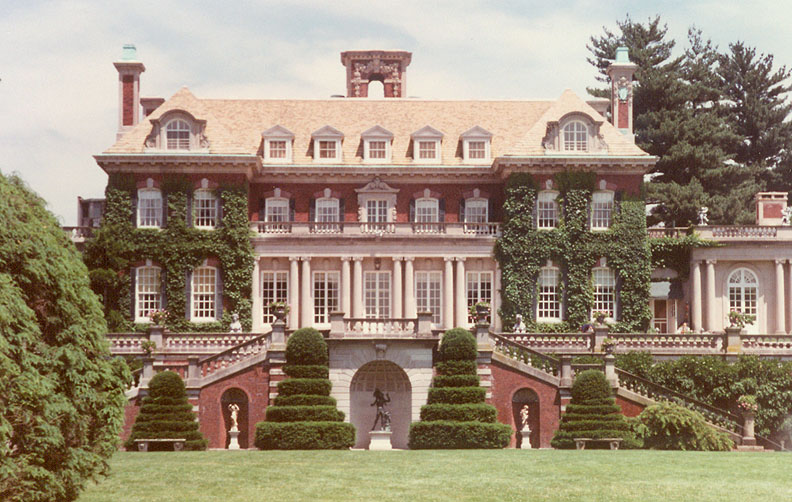
Westbury House
(75-room Beau-Art Georgian style Mansion)
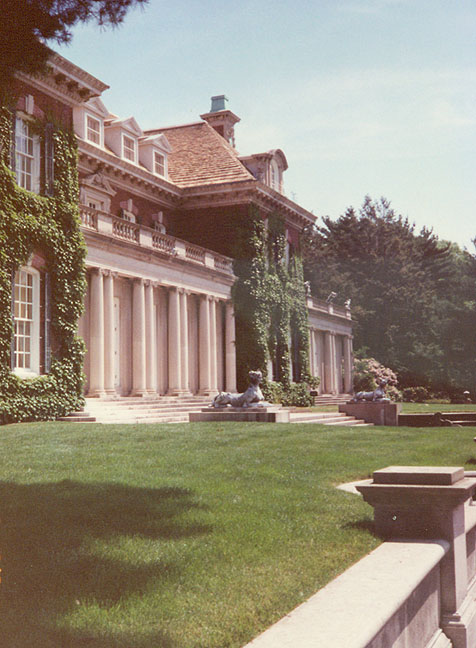
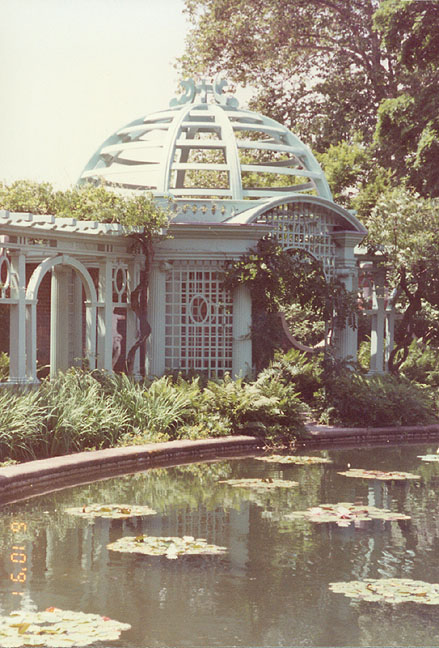
the gardens
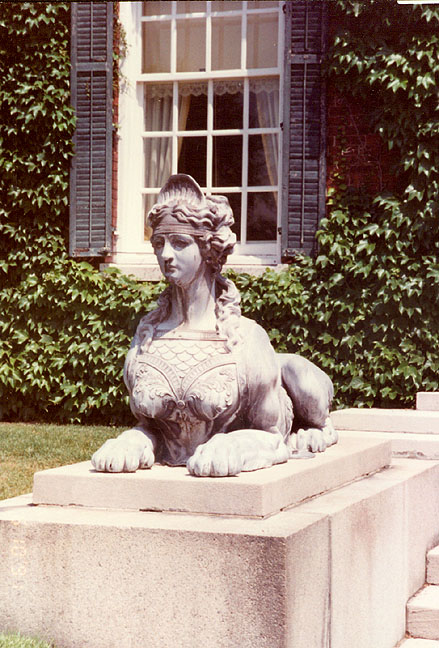
the guardian
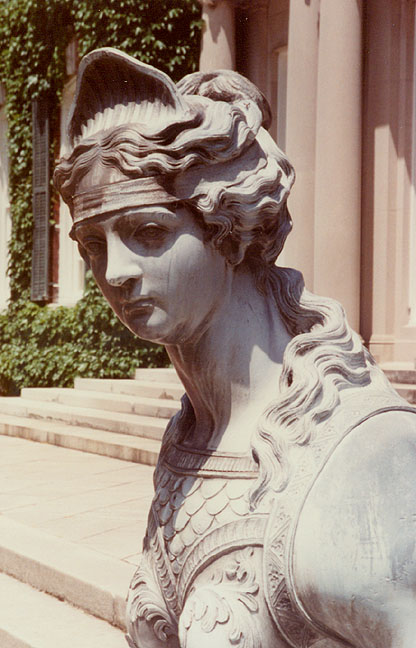
detail
![]()
Long Island is also a recreation and resort area for New York City. Numerous
state parks, beaches, golf courses, fishing grounds, yacht clubs, and other
resort facilities cater to the needs of both suburbanites and city dwellers.
Many beautiful estates are located on the island, particularly at Southampton
and along the north shore.
![]()
Sag Harbor
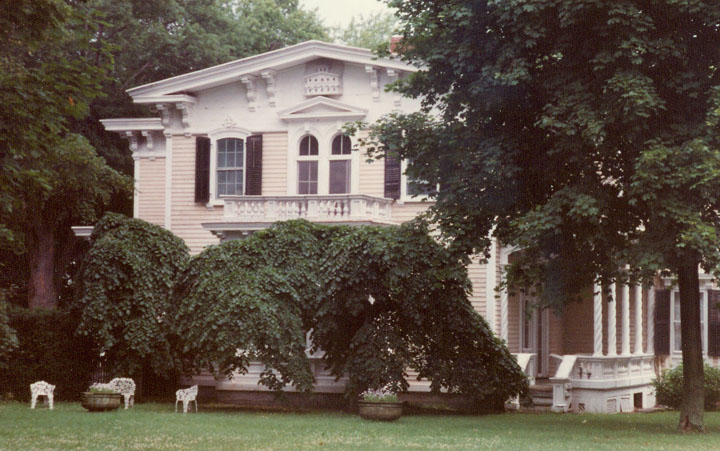
residence in Sag Harbor
![]()
The island has an extensive highway and train system and is served by the Long
Island Rail Road, the largest commuter railroad in the country. Brooklyn and
Queens are connected with the boroughs of Manhattan and the Bronx by bridges and
tunnels that carry vehicular, railroad, and subway traffic across the East
River. The Verrazano-Narrows Bridge, one of the world's longest suspension
bridges, connects Brooklyn with the borough of Staten Island across the Narrows,
a short strait between Upper and Lower New York Bay. Long Island is home to two
major airports: John F. Kennedy International Airport and La Guardia Airport,
both in Queens.
![]()
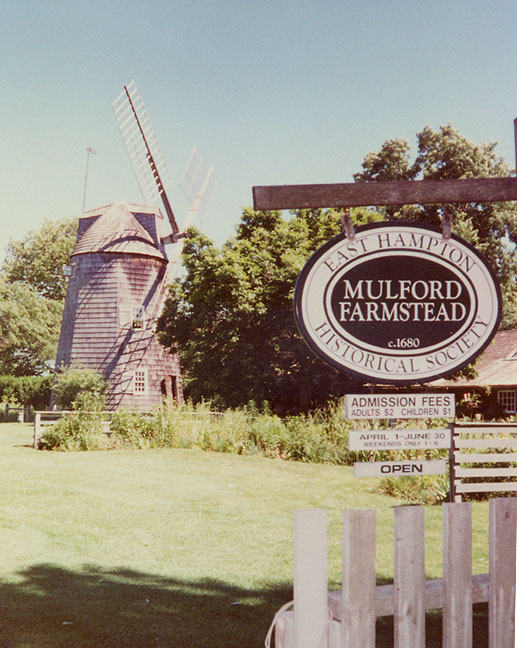
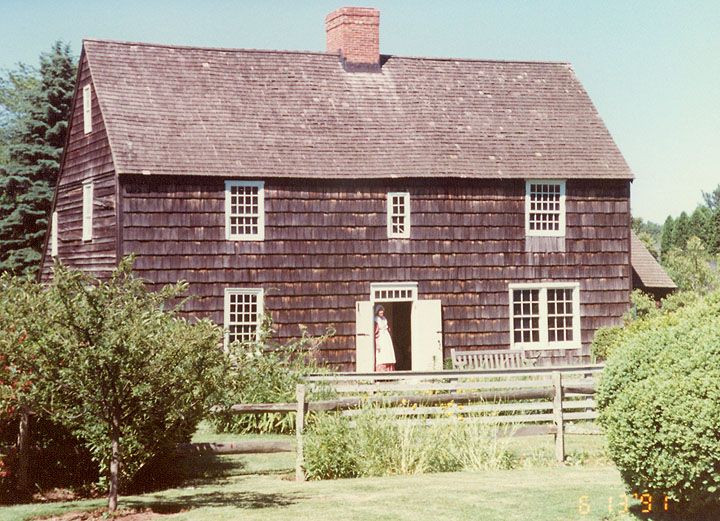
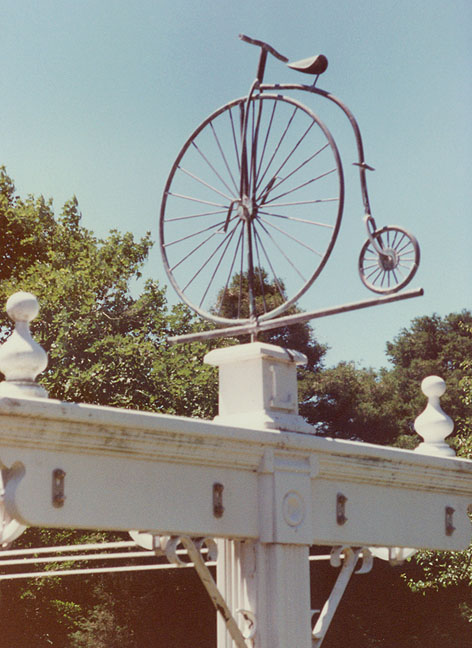
![]()
The first European to explore Long Island was English navigator Henry Hudson, who landed at Coney Island in 1609. The island was sparsely inhabited by several tribes of the Algonquin people, after whom many villages, streets, and bays on the island are named. The island was included in the grant to Plymouth Colony in 1620 and conveyed to William Alexander, earl of Stirling, in 1635. The Dutch were the first to settle the island, in about 1636, confining themselves to the western end. The north shore was settled soon after by New Englanders from Connecticut and Massachusetts Bay Colony.
![]()
Oyster Bay
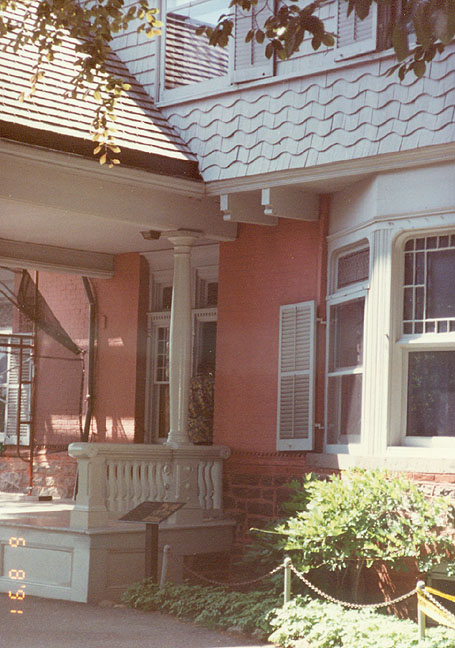
entrance to Sagamore Hill
Oyster Bay gained fame through its most notable
resident, President Theodore Roosevelt, whose three-story mansion “Sagamore
Hill” (built 1880 at Cove Neck) became the summer White House (1901–09); it is
now a national historic site. The Theodore Roosevelt Sanctuary (a bird
sanctuary) and Trailside Museum are nearby, and Roosevelt's grave is in the
adjacent Young's Memorial Cemetery.

President Theodore Roosevelt's Office and hunting trophy chair
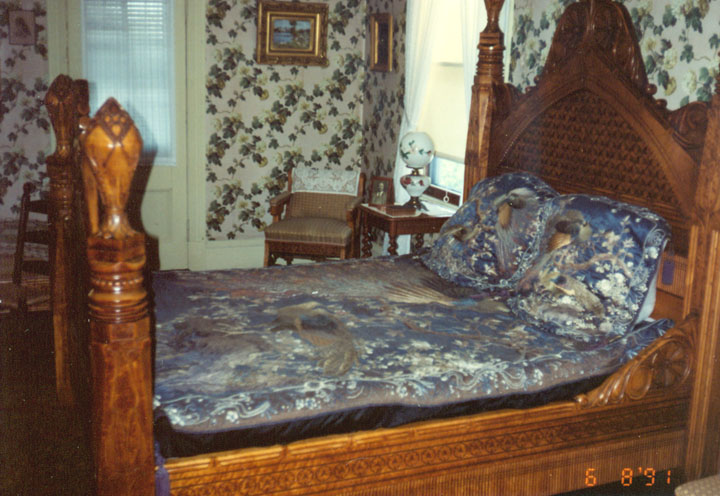
President Theodore Roosevelt's bedroom
![]()
Friction soon developed between the two groups of settlers. In 1650 a treaty was signed in an attempt to alleviate the friction. It assigned territory west of Oyster Bay to the Dutch and the eastern portion to the English. In 1664, however, King Charles II of England claimed the entire island as part of the new British province of New York. Thereafter the island's inhabitants were little affected by outside events until the American Revolution (1775-1783).
![]()
Coe Hall in Oyster Bay
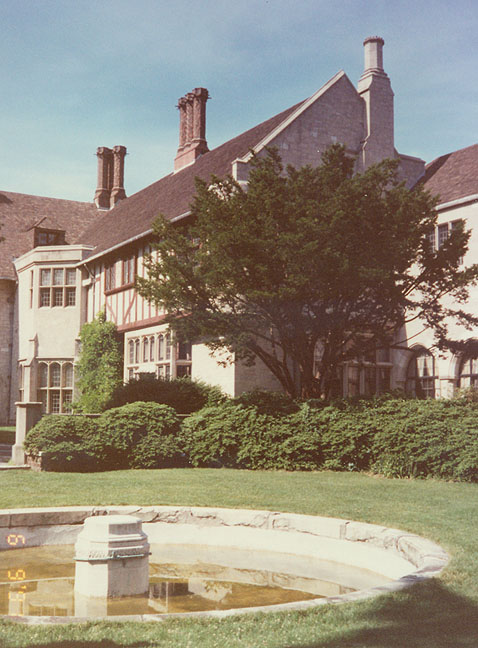
Coe Hall
English, Medieval and Elizabethan style
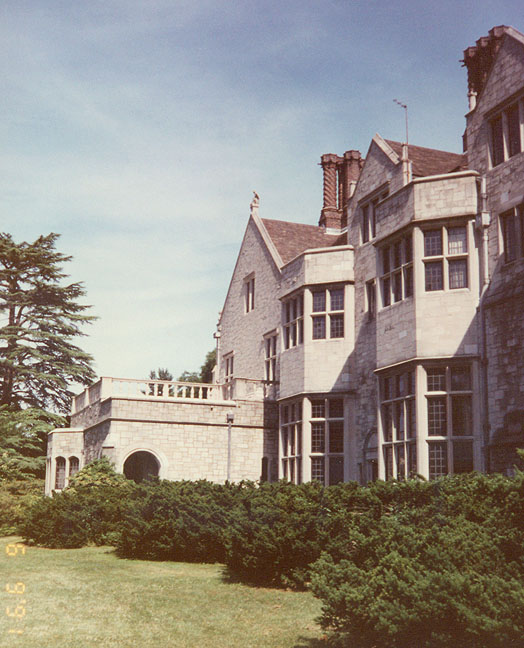
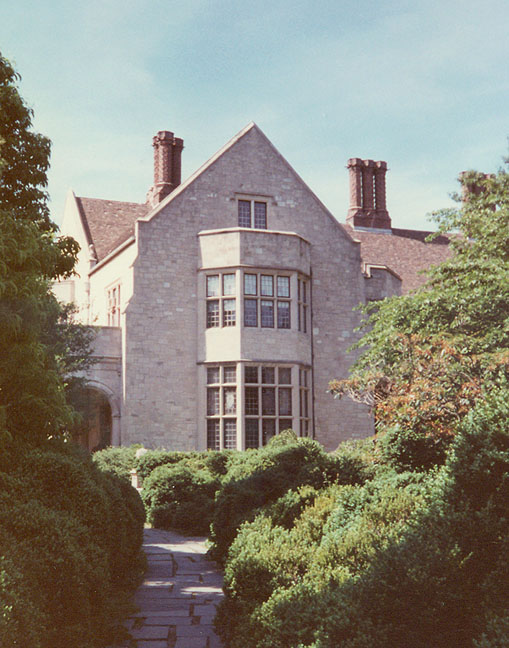

Elizabethan motif
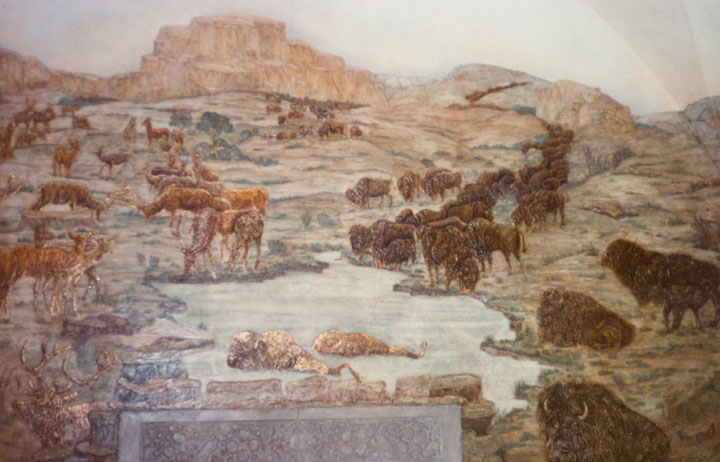
interior wall covering
![]()
The Battle of Long Island was fought on August 27, 1776, in what is now
Brooklyn. Colonial troops led by General George Washington tried to delay the
movement of the British up the Hudson River but were ultimately forced to
retreat. The British held the island until 1784.
![]()
St. Andrews Dune church
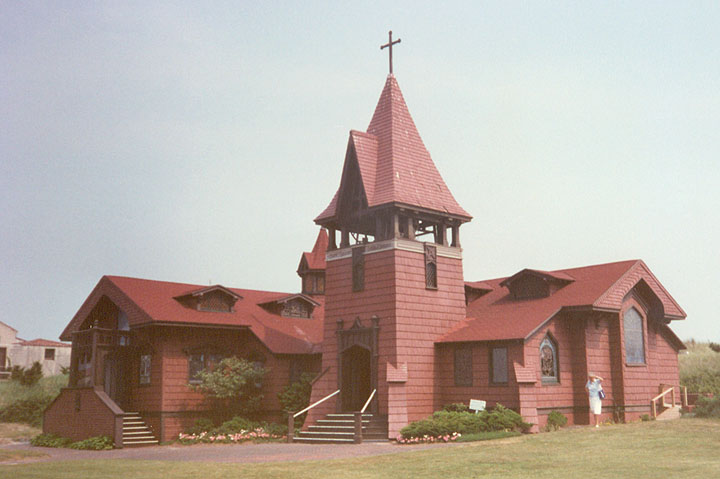
the church transformed from a life boat station
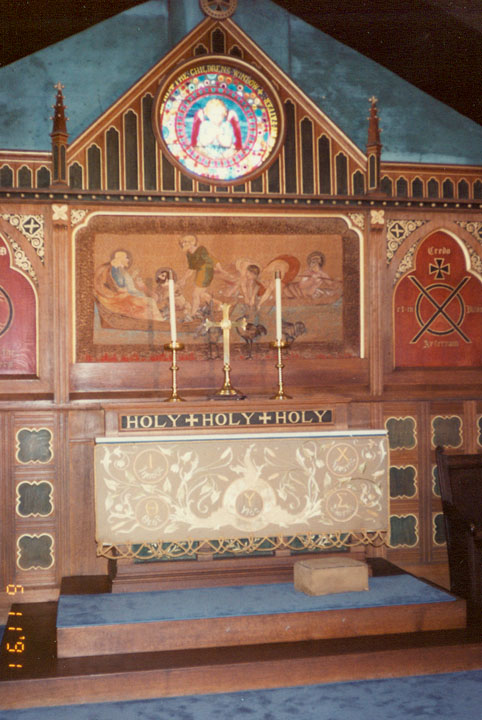
the altar

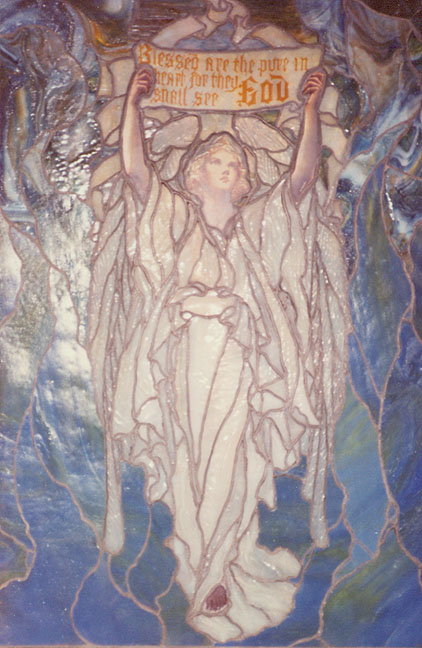

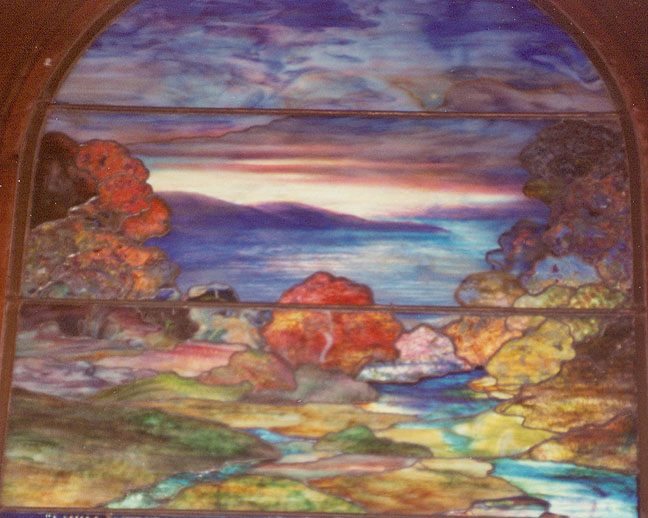
Tiffany windows
![]()
The first major boon to the island's economy came with the completion of the railroad to Greenport, at the island's east end, in 1844. The railroad permitted the rapid development of the island's agricultural resources. The suburban development of Nassau and Suffolk counties began in the late 1940s as city dwellers began moving to the suburbs. Growth continued into the 1970s on much of the island, although the eastern end retained its rural character.
![]()
Hampton Road

19th century Smith cottage
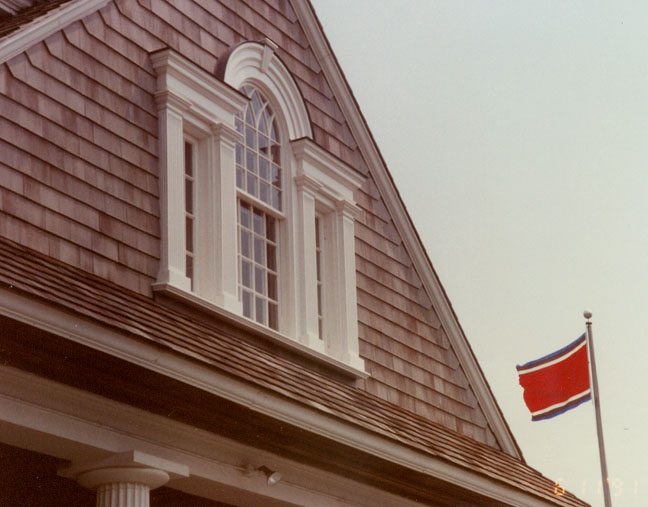
window detail
![]()
Long Island is 190 km (118 mi) long from east to west and 19 to 37 km (12 to 23
mi) wide, covering an area of 4,463 sq km (1,723 sq mi). Population 6,882,362
(1997 estimate).
Text from Microsoft Encarta
![]()
Roses and Azaleas of Long Island
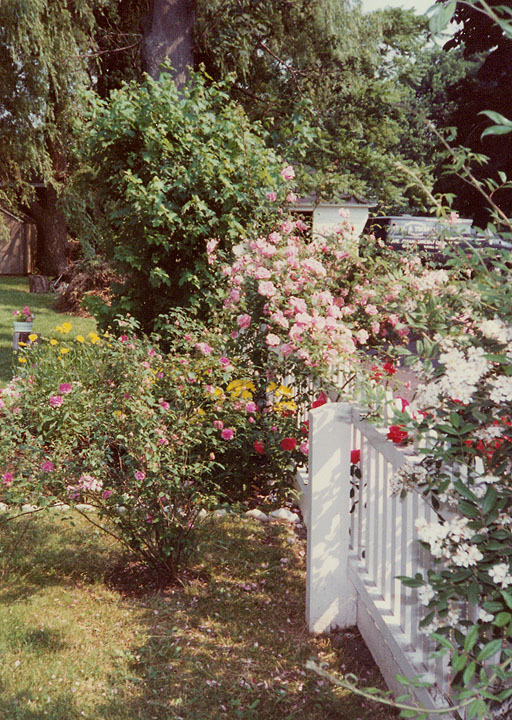
rose garden

roses
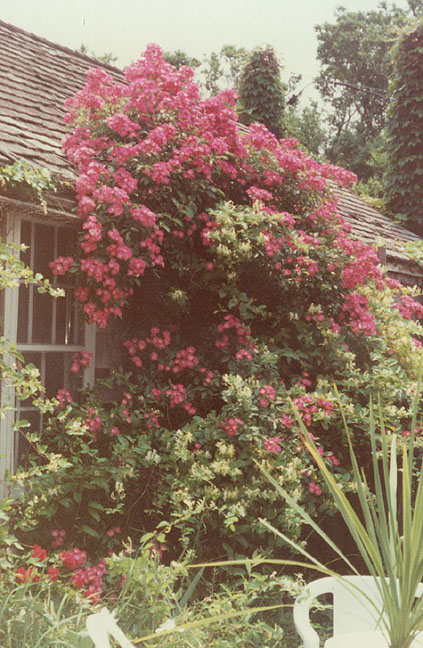
azaleas
![]()
![]()